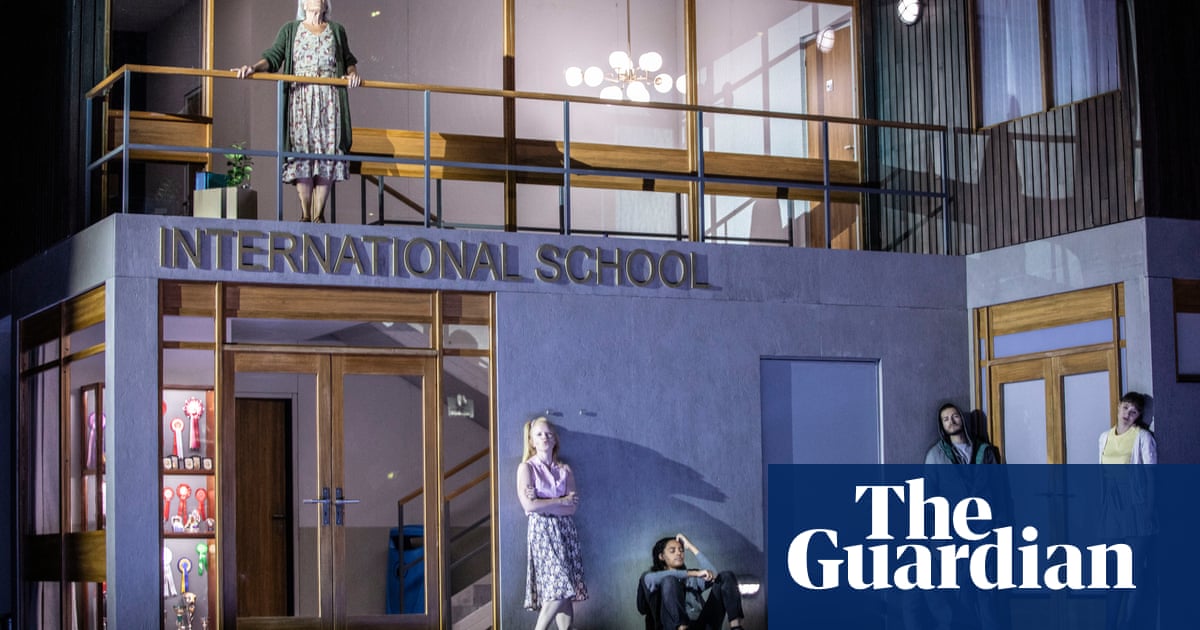
She wears a black coat, a black headscarf and black boots in compliance with Iran’s Islamic dress code. But her gaze is direct and on her hands are red boxing gloves. This is the modern Iranian woman on the cover of a new photography book, Breathing Space: a woman ostensibly complying with the rules, yet standing defiant and ready to fight.
Edited by the curator Anahita Ghabaian, who founded the Silk Road Gallery, Tehran’s first space dedicated to contemporary photography, Breathing Space showcases the work of 23 female Iranian photographers across three generations. The images span documentary and reportage to portraits and staged scenes, and offer a female lens through which to see the country at a time when Iranian women’s fight for their rights has come to the attention of the world.
Recent protests have highlighted the depth of repression and discrimination. When 22-year-old Mahsa Amini died last September after being taken in for “bad hijab” by the nation’s “morality police”, the demonstrations that followed were led by women, and their repression has shown the world the brutality with which the Islamic Republic of Iran controls its people. And yet how is it that in Iran these women can produce work, exhibit and even find fame at home and abroad?
On a call from Tehran, Ghabaian explains that “in Iran, no one accepts all the restrictions. It is a very particular and peculiar situation here. Of course, there are many difficulties and challenges. But artists circumvent the restrictions in order to express themselves, to say what they have to say, to push the limits of what is possible. Sure, it is not like being in the UK where you are free to say what you like, but it’s also not true that because there are restrictions, everyone just shuts up and sits at home and does nothing.”
Iran’s long history has seen many dictatorships and invaders, and much repression, so its art is traditionally indirect, using metaphor and symbols to say things that are otherwise outlawed or unacceptable. The work of these photographers shows the latest development of this sensibility.
Common themes include the Iran-Iraq war, the sense of nostalgia and loss within modern life, and a land and climate in crisis. “The Iran-Iraq war,” says Ghabaian, has left “a deep scar on the Iranian psyche”. She points to the work of the photographer Shadi Ghadirian, who was a child during the conflict and whose series Nil Nil juxtaposes articles of war with everyday objects; Maryam Takhtkeshian’s series No Soldier Has Returned from War reflects on the personal loss her family suffered by using expired black-and-white film to create overexposed, blurred images that make the soldiers pictured unidentifiable, eerie and ghostly. Meanwhile, Solmaz Daryani’s The Eyes of Earth series is an ongoing project that charts the impact of the rapid drying up of Lake Urmia – once the Middle East’s largest saltwater lake – with apocalyptic shots of bird skeletons and discarded tyres lying in dry salt.
Although photography, especially by women, is a young art form in Iran, its evolution is apparent. As Ghabaian points out: “This is an artistic book but it’s also a historical book. We have three generations of women photographers, and what’s interesting is that the first generation, who were shooting from the late 1970s onwards”, focused on the “public: what happened in the street, what happened in the university, what happened in the factory. They don’t focus on themselves.”
From the 90s, the second generation of photographers such as Ghadirian and Newsha Tavakolian “speak more of the condition of women but without really talking about themselves”, says Ghabaian, “while the third generation, whose work is from the last few years, are really only speaking of themselves.
“I think the older generations wouldn’t have given themselves permission to talk of themselves,” says Ghabaian. “They were documenting what was happening, looking outside of themselves. Then the following generation started to set things up, to stage what they wanted to say, to look inside. We have come out of pure reportage and documentary and gone towards a sort of staged self-expression. Now our young people are like young people everywhere: they see things on the internet, on social. This generation is really open and self-aware, and they have shifted their gaze inwards.”
In spite of the breadth of the work, and the different ages and styles of the photographers, “there is a bitterness to the book, a sadness, to all the works,” says Ghabaian. “Because in Iran we have these problems and difficulties that everyone here knows about, that we don’t want to be silent about any more. This book also serves to tell the world about these challenges. It is an act of resistance.”
View finders: five female photographers from Iran
Rana Javadi’s When You Were Dying, 2008
“Javadi is part of the first generation of female photographers; during the 1979 revolution she was photographing what was happening in the universities. When she was not given permission to photograph the Iran-Iraq war because of her gender, she turned to studio work. This picture, with traditional textiles, represents the past and emphasises the power of nostalgia. Yet she has placed a mirror on the image, too, and reflected in there is a plant, a sign of hope.”
Nazli Abbaspour’s Reincarnation, 2017-2019
“Several photographers have nostalgia; maybe because the present is so difficult. Abbaspour uses her own family photos and adds elements such as the butterfly, representing delicacy and brevity of life.”
Malekeh Nayiny’s Updating a Family Album, 2004
“Nayiny takes old, faded pictures and adds strange elements to them, making them bright and colourful,” says Anahita Ghabaian. “So while it contains much nostalgia – which we all suffer from in Iran – it also brings joy and hope, taking away the bitterness of our yearning for a better past.”
Shadi Ghadirian’s Like Everyday, 2000-2001
“Ghadirian is a committed feminist,” says Anahita Ghabaian. “This was her protest about women not just in Iran but also the world. She realised all her wedding gifts were pans or Hoovers or colanders – all objects for doing domestic work.”
Newsha Tavakolian’s Imaginary CD cover, from the series Listen, 2010 (main image)
“It is illegal for women singers to release music under their own names. They have been made voiceless. Newsha imagines artwork for imaginary CDs and puts the woman in the very centre of the frame.”
Breathing Space: Iranian Women Photographers by Anahita Ghabaian is published by Thames & Hudson (£40) on 6 July.












